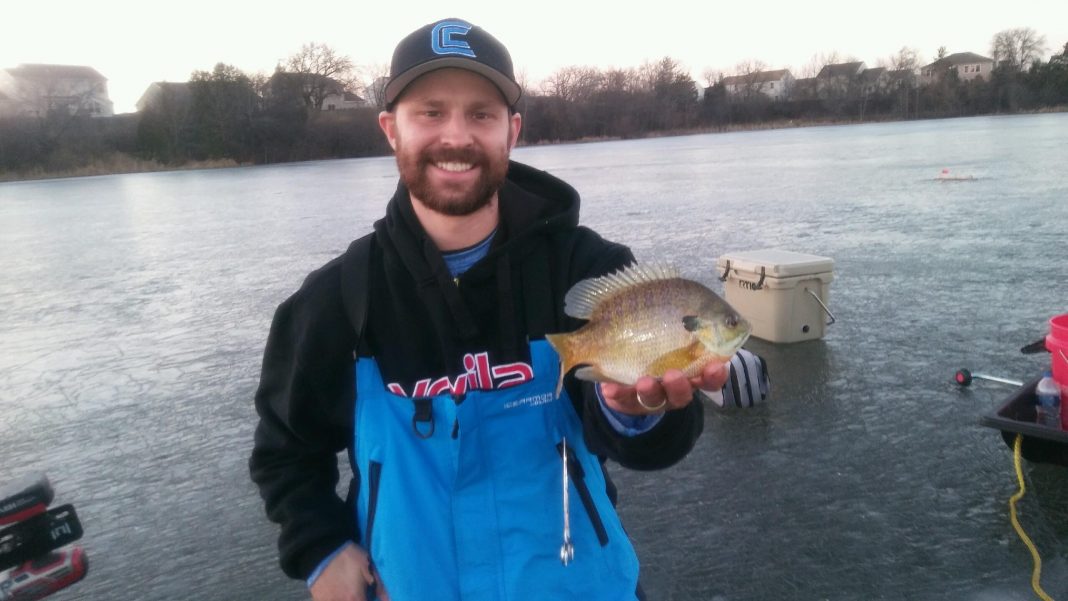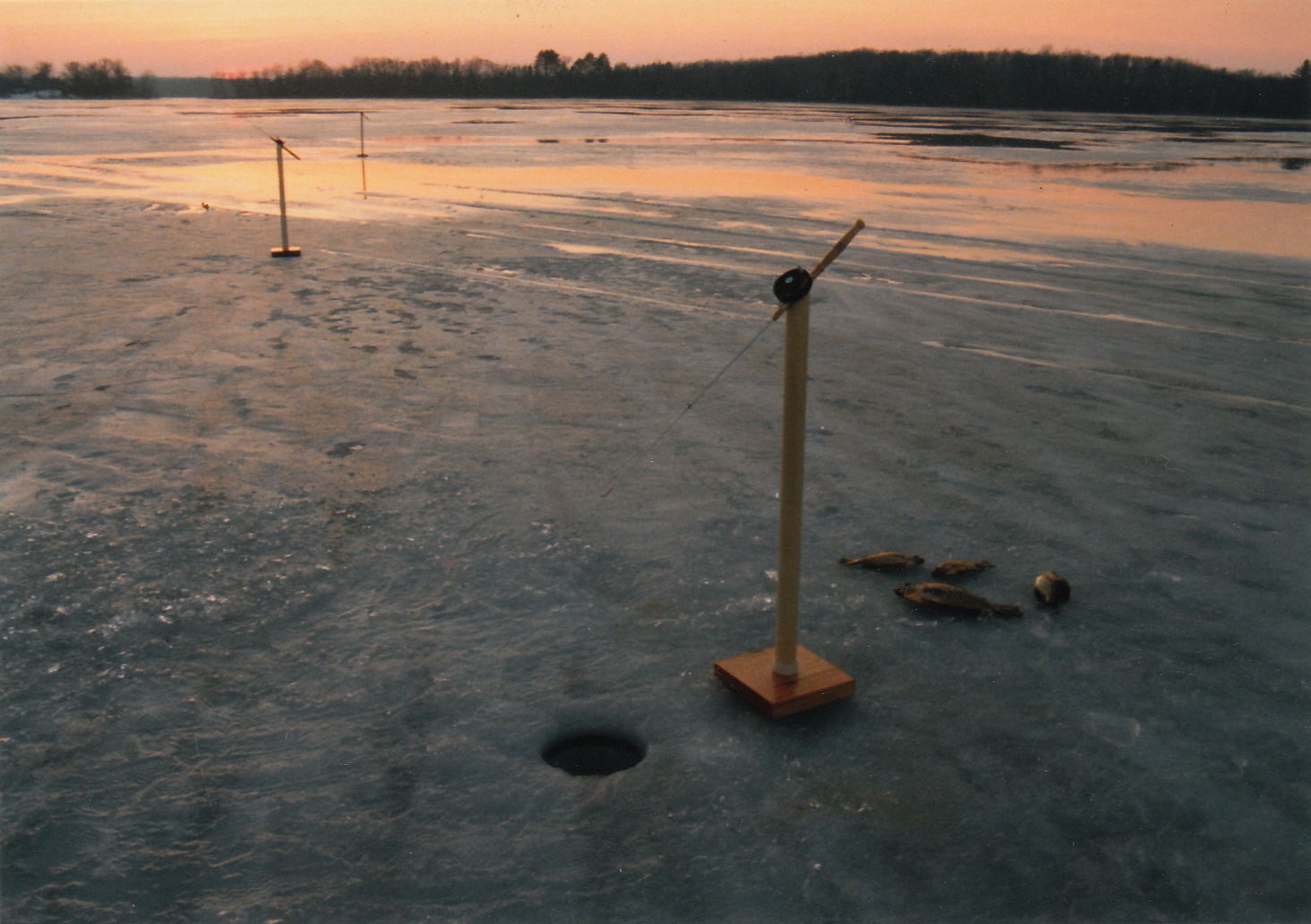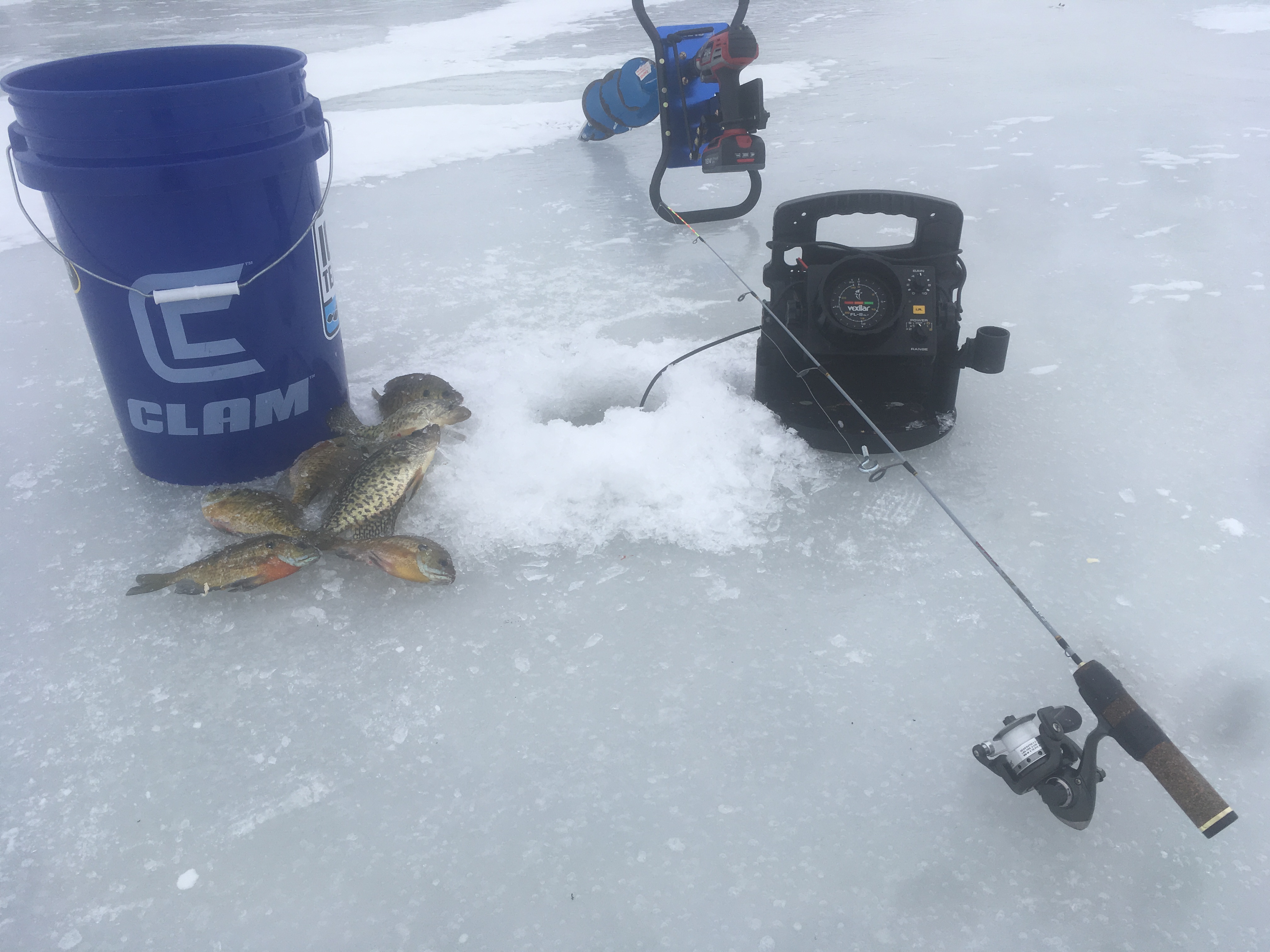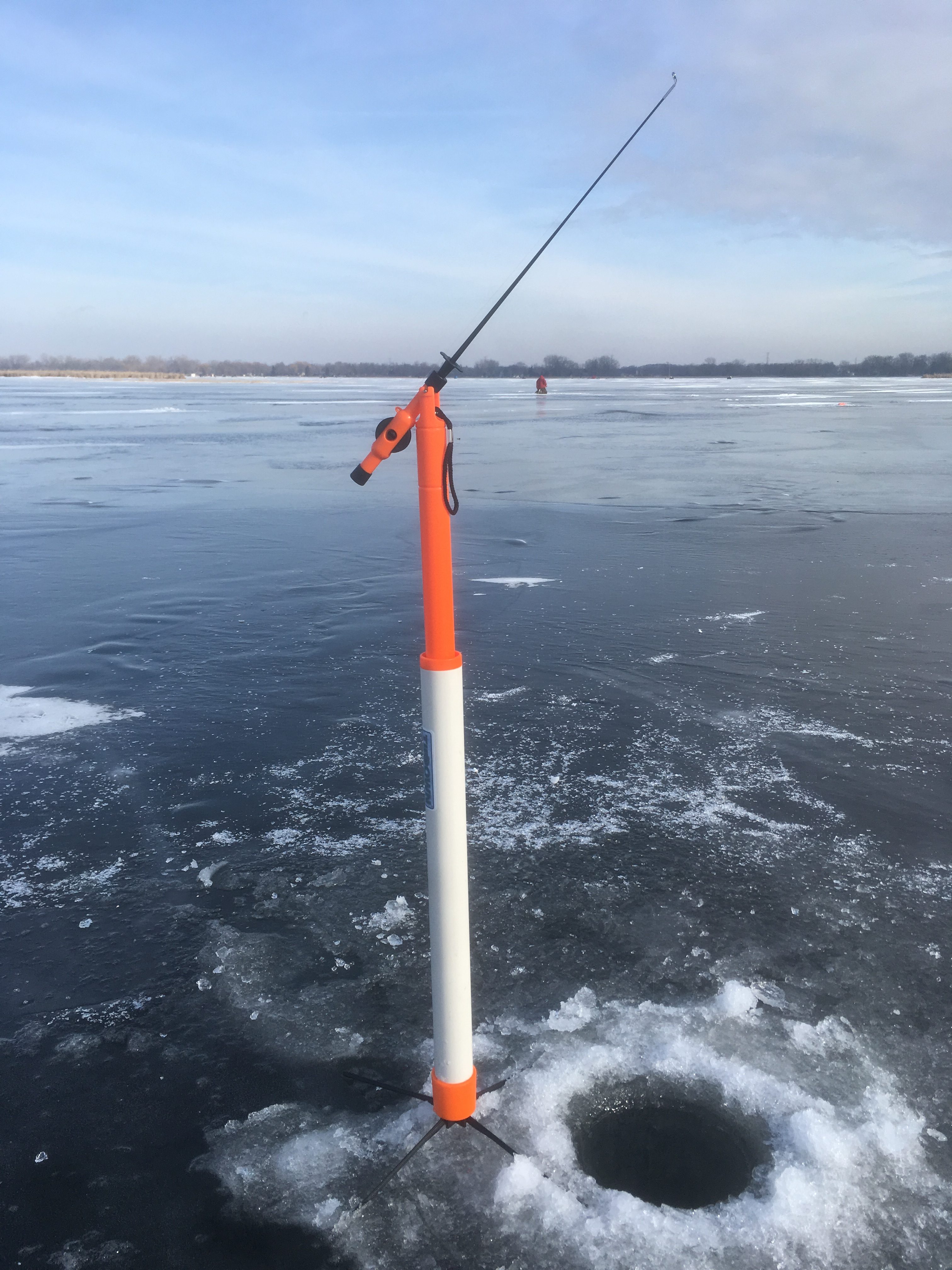Have you ever been on the ice wondering how you can cover a little more water when searching for panfish? I know I have before. This might not be ideal for everyone, but it certainly suites me and maybe others as well. Here’s my tip: pick up a couple of tip downs. It’s not rocket science to operate them, and they’re very simple and effective.
I prefer to use tip downs when fishing new bodies of water, larger structures, when I’m out fishing by myself, especially when the bite is finicky. It’s much different than when you’re fishing with a group of your buddies and everyone is working as a team to find fish.
With tip downs, I like to spread it out a little bit. Here in Wisconsin, you’re allowed 3 lines in the water, per person. I’ll setup 2 tip downs in different spots in a section of water I’m trying to cover, while I hole hop in another section. This allows me to cover a little more area at one time. I like to setup tip downs at different depths. Usually I’ll have a one set right off the bottom and the other suspended a couple of feet off the bottom. Typically I rig up a plain hook, between size 2-6, a sinker 6-8″ inches above the hook, and a live minnow or rosie.
Tip downs come in many different designs and styles, but they all serve the same purpose – to help you catch fish… A tip down functions on weight balance using an ice rod stand or brace with a notch. The rod usually sits at a 45 degree angle or horizontal in some designs. Once a fish has taken the bait, the rod literally tips down toward the ice (with no resistance to the fish at all), notifying the angler that there’s a “fish on”. You simply (and lightly) set the hook before reeling in. Most tip downs are very portable and easy to set up. It shouldn’t take more than a minute or two to set up.
Plenty of companies have come out with their own tip downs. HT has the master classic. Sullivan has the tip drop and the power jigging tip down. Innovative came out with a great tip down that folds in and out of a canister. Pirate fishing tip downs and Sure Strike are a few another companies that comes to mind. I know there are a ton of other companies that have their own tip downs. Some of these brands can be picked up at the local Fleet Farm, Gander Mountain or Cabelas. Other companies have websites you can order directly from. There are also plenty of ice junkies that have designed their own style of tip downs. They can be made out of wood, pvc, etc. I even have a buddy that used his old bow hunting arrows as part of his tip down system. They are simple and very cost effective to make. There are instructions and plans all over the internet to build your own that other anglers have shared.
What I like to look for in a tip down is something that I can use with a rod/reel combo that I already own, and something I can set up quick and pack up fast if I’m on the move. A few brands will allow you to do this. The Dangler rod holder tip down will allow you to use any type of ice rod. It’s very easy to set the rod up and remove the rod when a fish is on with their nylon dangler strap and universal strap.
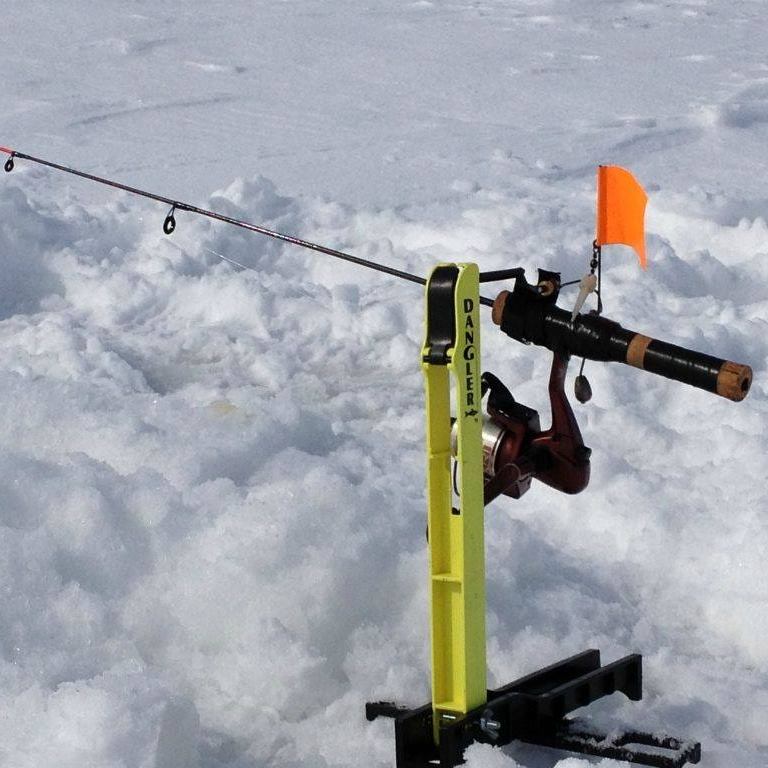
Sullivan makes a great tip down called the Tip Drop. This unit also gives you the ability to use any rod/reel combo. Another great feature that I personally love is that you are able to change the balance point and still have that ultra sensitivity when fish is on. Both of these units fold up, are light weight and can easily be stored in a 5 gallon bucket.
Clam has the Artic Warrior. Some people might consider this a “tip up” because it does have a flag that pops up after a fish has taken the bait, but the rod also tips down when a fish is on. It’s excellent for walleye and northern pike. I like this unit because it’s compact, super easy to set up, and again it allows you to use any rod/reel combo you own. I have caught anything from perch to northern on the Arctic Warrior.
My Tips for Fishing with Tip Downs:
Keep It Clean
Always clean the holes regularly, especially when it’s cold enough to freeze over. Typically people use light line when fishing with tip downs. The last thing you want is to hook into a nice fish and have a line break or cut due to a frozen-over hole. It’s all about preference and what you’re fishing for when it comes to choice of line. Nevertheless it’s always a good idea to keep the hole clean. When I clean the hole, I always lift the line up a foot or two, clean the hole and drop the bait back down. Dropping that line back down will usually get the bait to move around a little bit and could be just the trigger you need to get a quick strike. Or, an alternative is to simply invest in a hole cover to prevent the hole from freezing over.
Eyes on the Prize
Try to keep a constant eye on your tip downs. If a fish grabs your bait, obviously the rod tips downward. Some tip down systems will allow the rod to move back to the original position if a fish takes the bait and then lets it go. You don’t want to have your tip down get hit and not see it. There’s a good chance that fish will have taken your bait. You are defeating the purpose of covering more area if your hook is bait-less… So keep a good eye on them!
Mind the Wind
If there is wind, I recommend that you point the rod facing the direction the wind is coming from. This will allow the rod to have some movement, replicating live bait movement. Depending on the brand of tip down that you own, it’s a good idea to pack some snow around it too (if available) to add extra stability to the base of your tip down. This will prevent it from blowing over, or across the lake on a windy day.
These tips for using tip downs aren’t necessarily limited to only bluegill, crappie or perch. Many people use tip downs for walleye and northern pike too. In my opinion, it’s a lot more fun reeling in fish using a rod than your bare hands! Good luck on the ice and feel free to share any feedback in the comments below.

